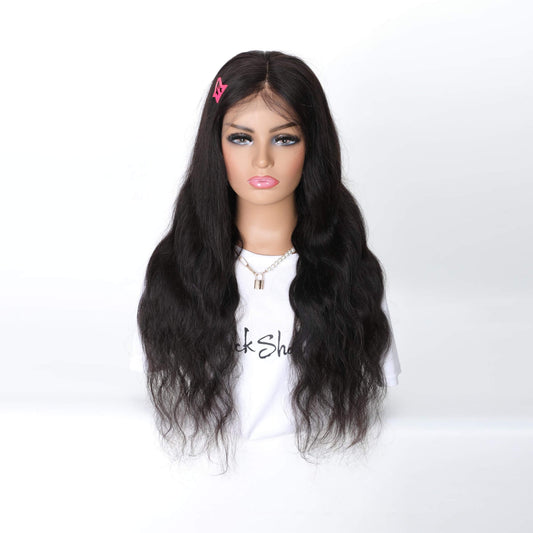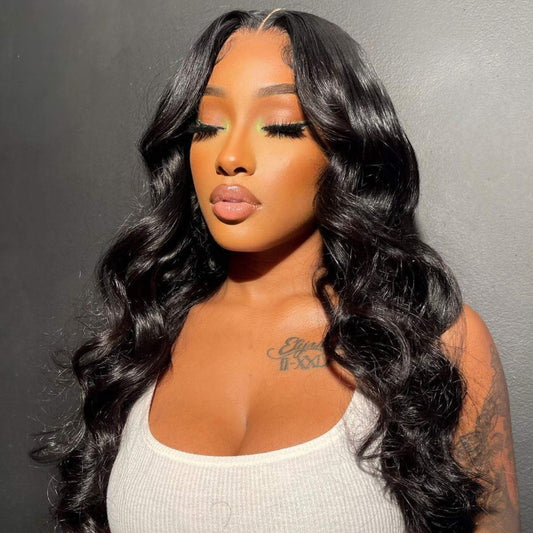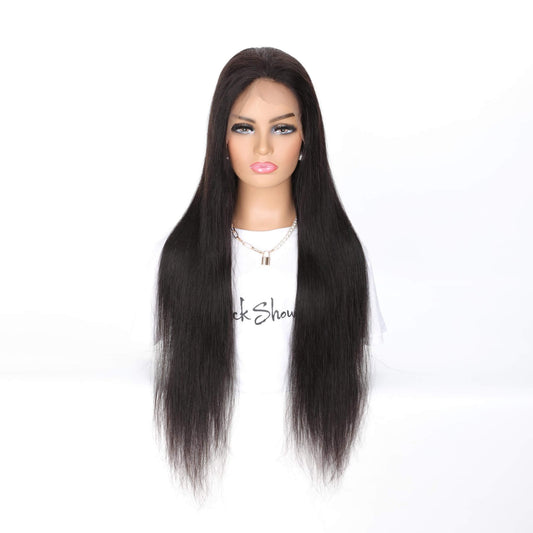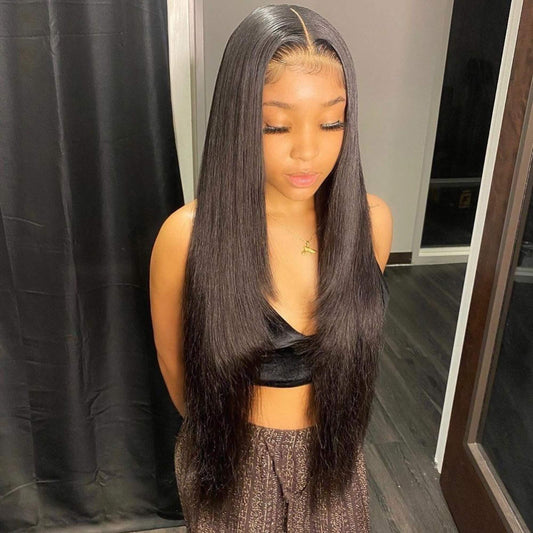How To Take Care of Your Hair Under a Sew-in
So, you finally got the courage to get that sew-in you’ve been dreaming of, but there’s something important you need to think of before you go through with that hairstyle. That important factor is how can you take care of your natural hair underneath the sew-in? Yes, one of the major reason's women get sew-ins is to protect their natural hair. But many women feel that just getting a sew-in is the first and final step. We are here to tell you today that how you treat your hair while wearing a sew-in, is just as important as how you treat it when all the weave is out. How do you go about this you might ask? It is a lot less complex than many might think, and a lot of these tricks you can do simply in the morning or right before you go to sleep. So, we have put together 10 tips that might help you with your hair care journey while keeping it protected. If you’re ready, dive into this blog post on how to protect your natural hair under a sew-in.
Invest in Dry Shampoo & A Blow-dryer
So, the number one thing that tends to happen when women get sew-ins is that they begin to sweat. And if you’re someone who is constantly visiting a gym or on the go you will be dealing with this issue quiet a lot. When excessive moisture starts to seep into your sew-in it begins to slip back. Not only will the slipping of the weave damage your natural hair but it will also cause they hair to become lifted thus making it very obvious that you are wearing a weave.
Our suggestion is on the days you know you’ll be out and about the most, is to carry a little dry shampoo with you. You can spray the product lightly around your hair to soak up any excess moisture on top of leaving your hair smelling fresh and clean. Another bonus is that many dry shampoos have extra vitamins in them that can help towards the growth of your natural hair. An alternative to dry shampoo is a blow-dryer. After a long day take a blow-dryer and target small sections of your sew-in until you completely dry the entire head of hair. But always make sure when you are finished spray a little leave in conditioner to help keep the scalp moisturized.
Condition Your Natural Hair
This may be the most important step that we even mention in this blog post you have to invest in proper hair conditioners. It is vital that we are feeding our scalp with the nutrients that it needs to grow. Conditioner is jampacked with the best vitamins and oils that will help stimulate your hair follicles and cause the hair to grow numerously in length. Think of our scalps like soil, and our hair as plants. With no water and treatment flowers won’t grow and neither will your hair. Our best suggestion is that you deep condition your hair before you even get the sew-in. Then, once the sew-in is installed, use a spray leave-in conditioner that you can apply to your hair once every three days, or as much as necessary to prevent you from having a dry scalp.
Use a Net When Getting a Sew-in

Most people don’t realize it, but getting a net sewn on to your braids before having the weave sewn on the braids is very important. The net acts as a barrier of extra protection between you and any chemicals that may come in contact with your weave while on your head. The weave net helps keep everything firm and in place. This simple product will prevent your weave from pulling too tightly on your edges and napes. Too much tension around the circumference of your hair will cause it to thin and fall out over time. So, ask your stylist beforehand of an option of laying a weave cap or net on your hair before getting the sew-in installed.
Don’t Over Use Products on Your Sew-in
Going overboard with the products on your sew-in is just as bad as not using any. When you put too many products such as shampoo, conditioner, mousse, in your hair, it will cause an oil buildup on your scalp. The more oil that builds up the more dirt and debris that will clog up the pours in your hair follicles. So, when trying to keep the moisture in your hair try opting for more light weight products such as Argan oil. Also make sure you have a hair care routine. Sticking to a plan of when you treat or add moisture to your hair can help you in the long run not overuse anything. Whether it’s once every 3 days or every morning before you wake up, just make sure you set a time and place to moisturize your hair.
Lay Down Your Baby Hairs and Edges Before the Sew-in
This tip may not seem important but we can’t stress to you how much it is. When you do not lay down your edges the weave will tug on the most sensitive parts of your hair first. This problem is the number one reason you will see women with no edges after their sew-in is taken out. So, make sure before you even get to the step where they braid your hair for the sew-in, you ask the stylist to leave out any baby hairs you would like to keep gelled down. That way once the weave is taken out your edges are still intact and growing healthy. With that being said make sure you are also investing in a proper gel. You don’t want to use any edge control that will dry the hair out this causing damage in the long run.
Make Sure Braids Aren’t Too Tight
Another problem women face before getting a sew-in is that the hair braided underneath is too tight. Although tension does help your hair to grow too much of it will cause an extra strain that will irritate your scalp, and make you lose hair before it even gets the chance to grow. Some stylists use extra braiding hair to make your hair stronger, before having the tracks attached to them. This alternative may be best for you, so make sure you do you’re research on different styling patterns and techniques before going to your hairstylist.
Sleep With the Proper Silk Scarf or Bonnet

How you take care of your hair while you’re sleeping is just as important as how you take care. As I’m sure you’ve all heard by now wearing silk head coverings before going to bed is a great way to lock in your hair's moisture. Sleeping with you no hair protection not only adds frizz to your strainers but also dries them out. If our weave or natural hair is too dry it will be easier for breakage to take way and split ends to occur. Always have a good night time routine when it comes to taking care of your weave and we promise your natural hair will thank you in the long run.
Stay Away from Additional Heat
Okay, so this one is tricky because we know that you probably gotyour sew-in to achieve various hairstyles that may require heat. We totally understand that, but staying away from additional heat such as blow drying, instead try letting year weave air dry. This solution is a much better alternative. Another great thing to stay away from is teeing out in the sun for too long. The rays and UV light from the sun can pierce through and on to your natural hair making it easy for damage to occur. Wearing hats or head wraps while being out can be an easy solution to this problem.
Wash The Braids While Wearing the Sew-in
Although you don’t hear of it much, it is definitely possible for you to wash your hair while having the sew-in still in place. I always say don’tbe afraid of a little co-wash. A co-wash means cleaning the hair with a conditioner only and products with no sulfates. Sulfates create a lather that can strip away your hair's natural oils and cause damage later on. So, go through your normal routine and as if you were washing your hair without the weave, and at the end use a microfiber cloth to absorb the water without causing dryness to your hair.
Take Out Weave When the Time Comes
We all know when it’s time to take out an old sew-in, and if you don’t allow us to explain. When your natural hair underneath begins to grow (which it will) your sew-in will rise. When your weave begins to rise it will look like you’re wearing a hair hat on top of your head. Your new growth will begin to peak out in the front of the sew-in and in the back. In some cases, your tracks will begin to be a noticeable for the eye & for everyone to see. It’s recommended to only have a sew-in for about 6 to 8 weeks. Even if signs of aging are not showing after that time period your natural hair still needs room to breathe. The best tip to taking care of that hair underneath that sew-in is being able to get to it in enough time. So, mark your calendars and touch up your sew-in in that allotted time frame.
How Do You Take Care of Your Hair Under a Sew-in?
There are so many different ways to treat the hair under your sew-in. And as we know we can touch on everything we’re curious to know how you maintain the health of your hair under your hair weave. Leave a comment down below and tell us your thoughts.





